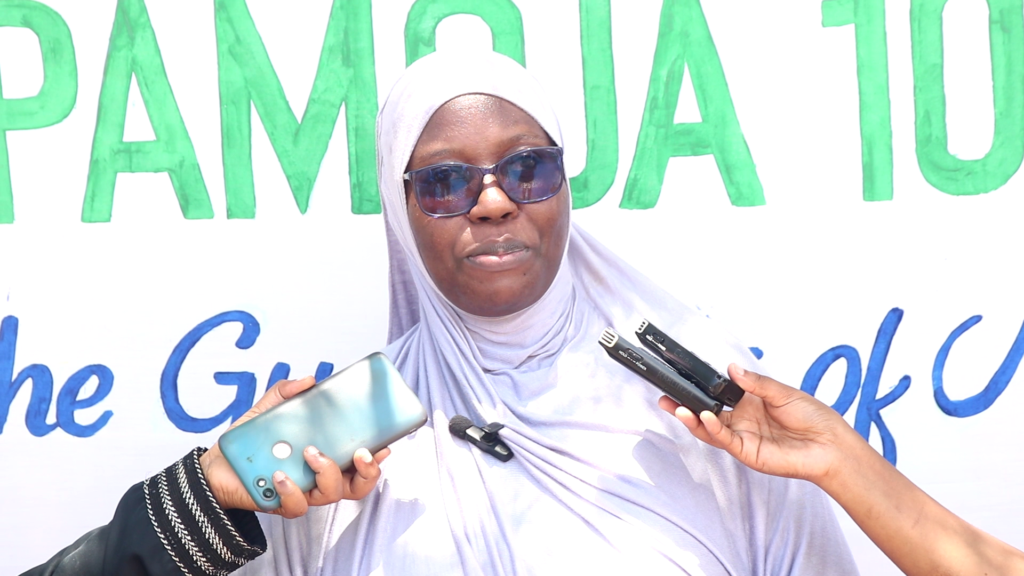By Mwanaharusi Rashid
In a milestone moment for environmental conservation efforts, Mikoko Pamoja, a community-led initiative is celebrating a decade of successful mangrove preservation in the Gasi area of Kwale County.
Founded on the principles of sustainable development and community empowerment, Mikoko Pamoja has emerged as a beacon of hope for mangrove ecosystems, demonstrating the power of grassroots action in safeguarding biodiversity and mitigating climate change impacts.
Historically, communities adjacent to Gazi Bay, in Kwale County, relied heavily on the mangrove forests for timber, a practice that jeopardized this vital ecosystem.
However, recognizing the unsustainability of such actions, they embarked on an ambitious journey to restore and protect over 117 ha of mangrove forests since 2013.
Mikoko Pamoja has seamlessly united the neighboring villages of Gazi and Makongeni under a common cause, the safeguarding of their precious mangrove ecosystems.
At the heart of Mikoko Pamoja’s mission lies a commitment to the preservation and restoration of vital mangrove habitats. With a pledge to conserve 107 hectares of natural forest and an additional 10 hectares of meticulously cultivated plantations, the initiative has become a custodian of biodiversity, shielding countless species and safeguarding the ecological integrity of the bay.
Beyond conservation, Mikoko Pamoja’s impact reverberates through proactive measures aimed at combating coastal erosion.
By annually replenishing 0.4 hectares of eroding shoreline, the project not only fortifies the resilience of local communities against the encroaching tides but also bolsters the bay’s natural defenses against environmental degradation.
According to the project coordinator Mohammed Kassim, since its inception ten years ago, Mikoko Pamoja has been at the forefront of mangrove conservation, rallying local communities, and stakeholders to protect and restore the vital coastal habitats found in the Gasi area.
Like many coastal regions worldwide, Gasi has faced threats from deforestation, pollution, and unsustainable resource exploitation, endangering the fragile balance of its ecosystems.
Recognizing the urgent need to address these challenges, Mikoko Pamoja collaborates with local communities, conservation organizations, and academic institutions to reach its goal.
At its core, the initiative operates on the principle of community-based conservation by empowering residents to take ownership of their natural resources and become stewards of the environment.
Over the past decade, Mikoko Pamoja has implemented a range of conservation activities aimed at protecting and restoring mangrove habitats in the Gasi area.
These efforts have included mangrove reforestation projects, habitat monitoring and research, environmental education and awareness campaigns, and sustainable livelihood initiatives for coastal communities.
Through this innovative mechanism, the initiative has not only contributed to climate change mitigation but has also empowered communities to invest in their future.
According to Amina Juma Hamza a senior research scientist at the Kenya Marine and Fisheries Research Institute (KMFRI), the Mikoko Pamoja stands as a beacon of community-driven conservation, marking a significant milestone as the world’s first community-based project to effectively trade carbon credits derived from mangrove preservation.
”The fruits of these endeavors materialize in the form of tangible carbon sequestration, Mikoko Pamoja annually offsets an impressive 3,000 metric tons of CO2-equivalent emissions, these carbon credits, meticulously vetted and accredited, find a home in the Voluntary Carbon Market,” She said.
Dividends reaped from carbon credit sales are not confined to financial gains alone.
 Instead, they form the cornerstone of a virtuous cycle of community reinvestment, channeling resources back into the very fabric of society from which they were derived.
Instead, they form the cornerstone of a virtuous cycle of community reinvestment, channeling resources back into the very fabric of society from which they were derived.
Through a holistic approach to community development, Mikoko Pamoja ensures that the benefits of conservation transcend environmental boundaries, directly impacting the lives of over 5,400 residents across Gazi and Makongeni.
Education emerges as a primary beneficiary of Mikoko Pamoja’s philanthropic endeavors, with investments flowing into initiatives aimed at nurturing the minds of the future generation.
Simultaneously, water, sanitation, and environmental protection projects lay the groundwork for sustainable development, fostering resilience in the face of environmental challenges.
As Mikoko Pamoja marks its 10th anniversary, the initiative reflects on a decade of milestones and achievements in mangrove conservation.
Thousands of mangrove seedlings have been planted, hectares of degraded habitat have been restored, and countless lives have been touched through environmental education and capacity-building programs.
Last year the United Nations in Kenya bestowed the title of Person of the Year upon Mikoko Pamoja, marking a significant shift in community-based environmental efforts.
This recognition applauded the Gazi community’s transformative journey to mangrove restoration champions and their groundbreaking efforts in global carbon financing.
The success of Mikoko Pamoja serves as a testament to the power of community-driven conservation and the transformative impact it can have on both ecosystems and livelihoods.
By fostering partnerships, promoting sustainable practices, and empowering local communities, the initiative has demonstrated a model of conservation that is both effective and inclusive.
Yet, Mikoko Pamoja’s ambitions do not end here. Buoyed by its resounding success, the initiative has become a model for replication, inspiring similar endeavors across Kenya and beyond.
Looking ahead, Mikoko Pamoja remains committed to its mission of protecting and preserving mangrove ecosystems in the Gasi area and beyond.
With continued support from partners, donors, and stakeholders, the initiative aims to build on its successes and scale up its efforts to address emerging threats and challenges facing coastal environments.
As the world grapples with the impacts of climate change and biodiversity loss, initiatives like Mikoko Pamoja offer a ray of hope, demonstrating that by working together, communities can make a real difference in safeguarding the planet for future generations.
Mikoko Pamoja stands as a shining example of what can be achieved when people come together in pursuit of a common goal, to protect and preserve our natural heritage for generations to come, through unwavering dedication, innovative solutions, and a steadfast commitment to the preservation of our planet’s natural heritage.


